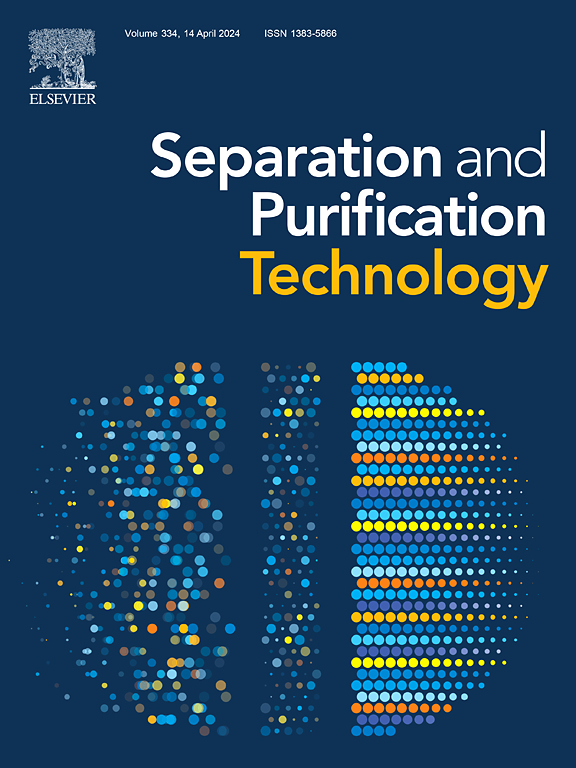A systematic mathematical model to accurately predict SO2 absorption performance of binary mixture of alkanolamine and ionic liquid
IF 8.1
1区 工程技术
Q1 ENGINEERING, CHEMICAL
引用次数: 0
Abstract
In the absorption of SO2, it is very important for industrial applications to set up mathematical models to describe the changes in physical–chemical properties and the absorption dynamic processes. However, most of the research only pays attention to the molecular structure of absorbent. Few works have investigated the mathematical models in the absorption processes. To make up for the research gap in this area, a binary absorbent composed of 2-(dibutylamino)ethanol (DBEA) and 1-Ethyl-3-methylimidazolium trifluoromethanesulfonate ([Emim][TfO]) were developed for SO2 capture in the present work. A systematic mathematical model was proposed to accurately predict the viscosity and density of the absorption system with different absorbent compositions, SO2 absorption capacities, and temperatures. Additionally, the absorption kinetics and thermodynamics were analyzed across varying absorbent compositions and SO2-containing gas flows, enabling dynamic prediction of the absorption process. Furthermore, the correlation between desorption residuals and desorption temperature was investigated, along with an analysis of SO2/CO2 selectivity and the cyclic SO2 absorption performance. This work provides a robust framework for rational screening and design of alkanolamine-IL hybrid solvents, bridging the gap between experimentally empirical solvent development and theoretical prediction.

求助全文
约1分钟内获得全文
求助全文
来源期刊

Separation and Purification Technology
工程技术-工程:化工
CiteScore
14.00
自引率
12.80%
发文量
2347
审稿时长
43 days
期刊介绍:
Separation and Purification Technology is a premier journal committed to sharing innovative methods for separation and purification in chemical and environmental engineering, encompassing both homogeneous solutions and heterogeneous mixtures. Our scope includes the separation and/or purification of liquids, vapors, and gases, as well as carbon capture and separation techniques. However, it's important to note that methods solely intended for analytical purposes are not within the scope of the journal. Additionally, disciplines such as soil science, polymer science, and metallurgy fall outside the purview of Separation and Purification Technology. Join us in advancing the field of separation and purification methods for sustainable solutions in chemical and environmental engineering.
 求助内容:
求助内容: 应助结果提醒方式:
应助结果提醒方式:


